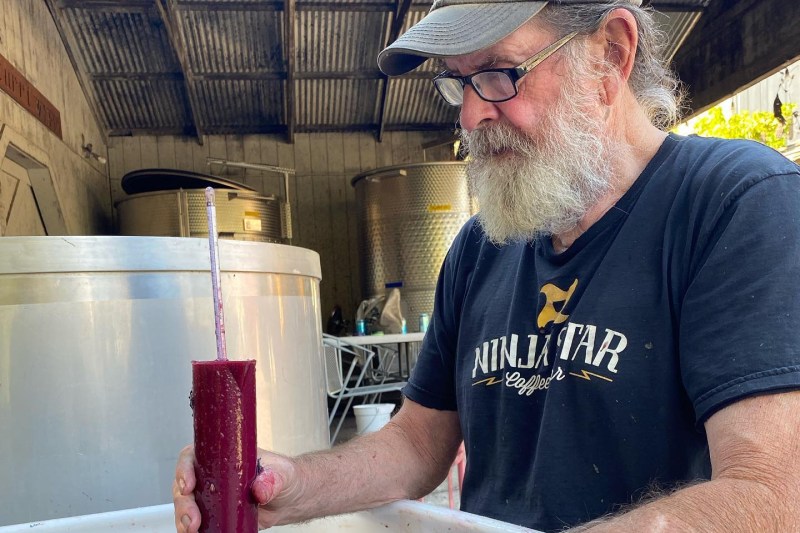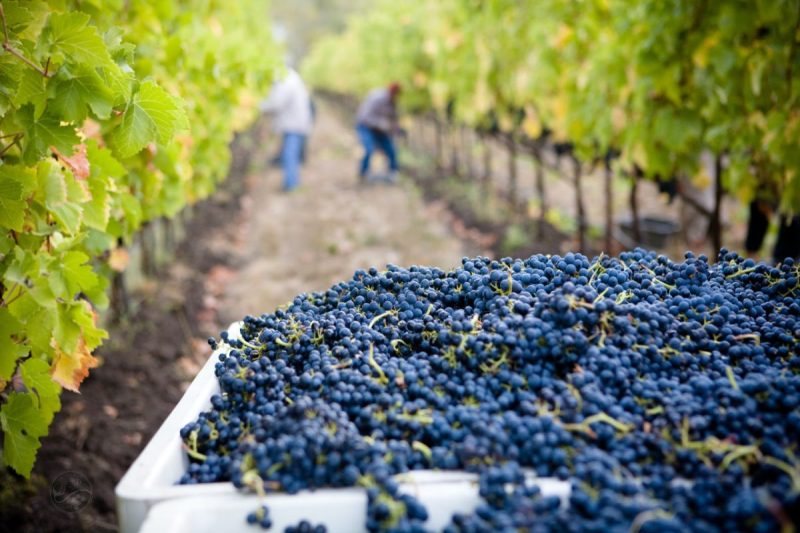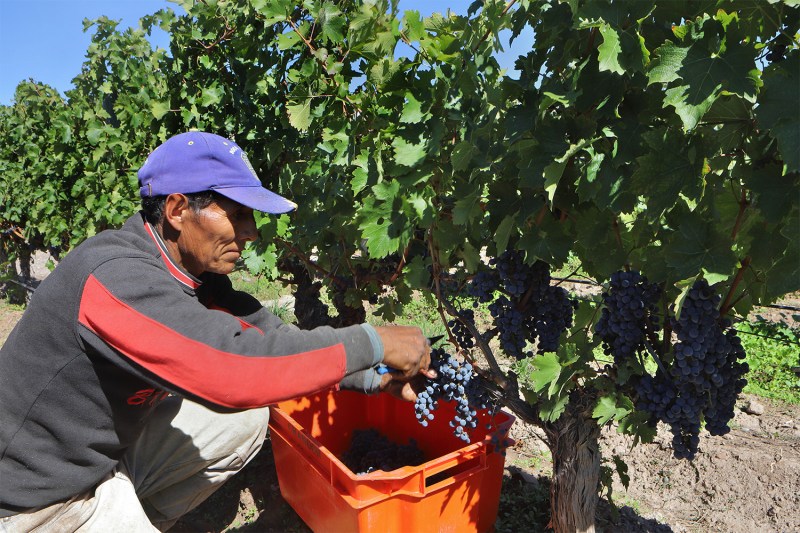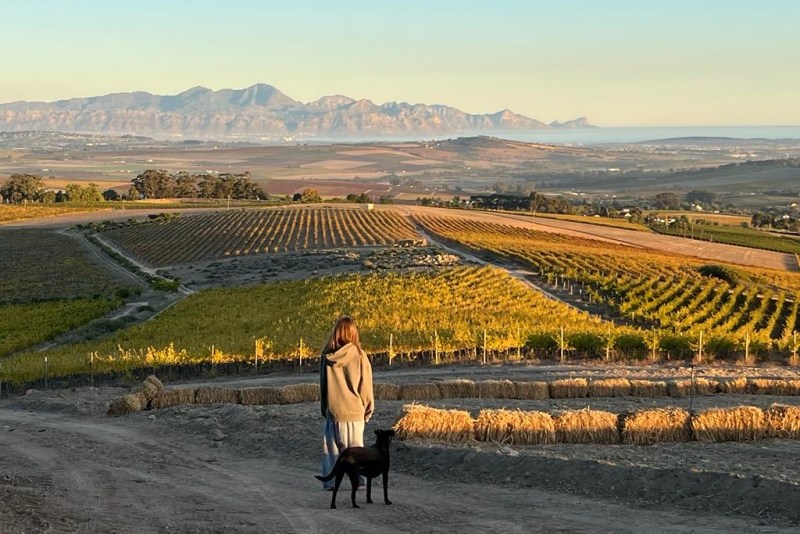The funny thing about wine is that there are so many knowns and unknowns. Experts speak an entire wine language, and there are countless grape varieties. At the same time, each vintage is dependent on the weather, something we have very little control over.
One of the biggest closed-door scenarios in the industry is the annual grape harvest. Sure, we’ve all heard about the frenzy that occurs every fall, but many of us have never witnessed what happens behind cellar room doors.

Fortunately, we’ve logged a lot of harvest hours. We’ve sorted fruit, punched-down fermentations, and helped curate playlists to keep winemakers energized (and not thinking about their many harvest-time superstitions).
Moreover, the wine industry has become more transparent. People want to know how their wine is made, and thanks to social media and experiential tasting, more consumers are being exposed to the process. That’s good for both winemaker and wine drinker, as the former gets to create a lasting relationship with his audience while the latter gets treated to an eye-opening education.
That said, there are still many fascinating things you probably didn’t know about the wine harvest.
Fascinating facts about winemaking and the wine harvest
It takes a forklift

Wineries, both big and small, depend on the forklift to keep things moving. This vital vehicle transports any and all things at the winery, from fermentation tanks and fruit bins to teetering stacks of barrels. By the end of harvest, worker’s forklift driving skills are put to the test, with very little room to spare in a house full of large equipment and aging wines. Yes, a lot of winemaking is done by hand, but the forklift is the workhorse of the vintage. A pallet jack can get you out of a jam, but for the really heavy stuff, the forklift is king.
Winemakers are superstitious

Like many athletes, winemakers can be very superstitious, and that can especially be seen during the harvest. Come harvest time, there’s a lot of knocking on wood. Winemakers don’t want to jinx anything, so talking about the weather or the hype behind the current growing season is almost always not allowed. Some winemakers may have a lucky hydrometer they use or a single band they listen to while working on the crush pad. They might don a single outfit all throughout the harvest (hey, it’s just gonna get stained anyway), or they might even pour some finished wine on the newest batch to christen the vintage.
Out with the oak

We tend to associate winemaking with oak barrels, especially from France, but many producers opt to go in other directions. Whether it’s stainless steel for a fresher, lighter wine or amphora or cement to honor an age-old style, vintners are stepping out of molds. They’re also honoring the concept of terroir and working with everything from barrels made from indigenous woods to native fermentations in locally made vessels.
Intense hours

Harvest tends to be an arc of activity. At its height, 12-16 hour days are not uncommon and can last weeks. Days off during harvest typically don’t exist, at least for the principal winemaking crew. So, not unlike a crab boat crew, there might be odd-hour naps, all-night shifts, and a lot of coffee.
Night picks

The evening functions like a natural refrigerator, preserving the freshness of the grapes. Many winemakers love how this accentuates the aromas and flavors of the fruit, as well as their structure. Picking at night can keep grapes from shriveling and keep acidity levels up where they need to be. Nowhere is this style of picking prized more than in warmer-weather wine regions. You’ll need a pair of gardening scissors and a good headlamp.
Safety precautions

There are dangers associated with most agriculture, especially involving equipment and weather. Harvest crews may be dealing with poor air quality in certain years and heat in others. Meanwhile, there are tractors to be on the lookout for, not to mention forklifts and flatbed trucks delivering the latest fruit from the vineyard. Inside, there are invisible dangers, like CO2, which a fermenting wine can produce in dangerous numbers. Crew members cleaning out tanks or first in the cellar in the morning have to be careful to avoid fainting. And this is to say nothing about working in and around extremely powerful presses, de-stemmers, and sorting machines.
It’s a full-body workout

Many winemakers, especially those getting on in age, actually train for harvest. That’s because, between the heavy lifting, long hours, and mental exhaustion, it’s hard work. So much is done manually, like sorting fruit or punching down the cap on a young fermentation. When it’s time to press, vats are often shoveled out, and much of it can be made more strenuous by dealing with the elements or lack of sleep (or both). And sanitation and space are key, meaning you’re almost working double time. So much significant equipment gets set up and broken down in a single day’s work.
Plenty of oddities

There’s so much more that goes into winemaking than a strain of yeast and some patience. In between all of the hard work mentioned, there are bizarre yet intriguing occurrences, too. Perhaps you witness those Hitchcockian scenes of birds en masse going after the second crop in the vineyard. Maybe you take a moment to smell the best smell in the world (young Pinot Noir going to barrel for the first time). Or, after a long shift during the heat of harvest, you can experience the nocturnal world. There’s something new for all the senses, from the gentle crackle of fermentation to the incredible color of just-pressed Syrah.
Harvest is core, but winemaking is all year

You’ve heard the saying, wine is made in the vineyard. And it’s true. But it also stretches way beyond harvest. While the crush may be the most intense part of the year, there’s much to be done beyond that, from pruning in winter to pulling suckers in spring and canopy management in summer.
Some chase two harvests a year

Harvest can be addictive, and it jumpstarts many careers in the wine industry. Some get so drawn to the stretch that they’ll try to knock out two in a calendar year. And, thanks to the wonders of a two-hemisphere world, that’s a distinct possibility. One could be making stellar Washington state wine in September and October and making Malbec in Argentina in March and April.



